The 24 best movies on Hulu in October 2021
With 007’s latest mission, No Time To Die, in theaters, Hulu plays host to Goldfinger, The Spy Who Loved Me, GoldenEye, and more of his greatest hits
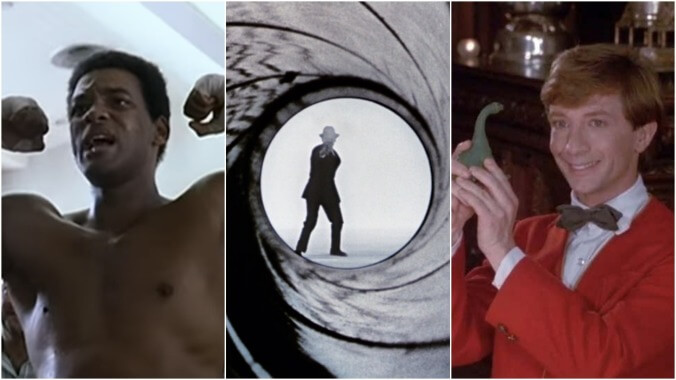
This October, there’s only one name Hulu subscribers need to know: Bond, James Bond. While 007’s latest mission, No Time To Die, is in theaters, the streamer plays host to a selection of his greatest hits: Goldfinger, The Spy Who Loved Me, and GoldenEye among them. For a more seasonal selection, give a look to the best horror movies on Hulu, the annual Huluween lineup, or one of the finest scary movies this scary year has to offer—Censor, which arrives October 14. All that, plus cinematic classics starring the likes of Will Smith, Julia Roberts, Paul Newman, Steve Martin, and Martin Short. (Just in time for the Only Murders In The Building finale!) But be forewarned: Like Bond, Clifford is only here until October 31.

This October, there’s only one name Hulu subscribers need to know: . While 007’s latest mission, , is in theaters, the streamer plays host to a selection of his greatest hits: Goldfinger, The Spy Who Loved Me, and GoldenEye among them. For a more seasonal selection, give a look to , the annual Huluween lineup, or one of , which arrives October 14. All that, plus cinematic classics starring the likes of Will Smith, Julia Roberts, Paul Newman, Steve Martin, and Martin Short. (Just in time for the finale!) But be forewarned: Like Bond, is only here until October 31.
Too many filmmakers flinch when tackling sobering topics like slavery or genocide. But with 12 Years A Slave, director Steve McQueen and screenwriter John Ridley made an absorbing, emotional drama, staged and shot with real panache. Based on the true story of educated Black musician Solomon Northup (Chiwetel Ejiofor)—who was kidnapped, sold into slavery, and shipped from one plantation to another in rural Louisiana—the movie gradually becomes a nightmarish survival tale, about how learning to please cruel masters sometimes comes at the expense of morality and empathy. [Noel Murray]
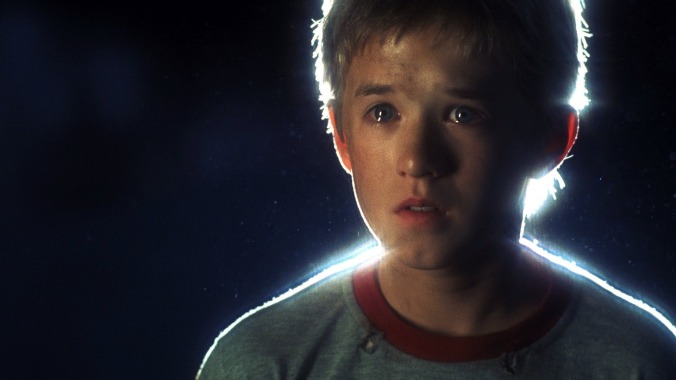
Steven Spielberg’s thoughtful and profoundly sad fairytale about a childlike android (Haley Joel Osment) who wants to become a real boy is about as dark as a special effects fantasy can get without betraying its core principle of wonder. Programmed to yearn for his adopted human mother’s love, little David travels through the garish neon metropolises, drowned downtowns, and robot demolition derbies of the future in search of Pinocchio’s Blue Fairy, accompanied by a fugitive sex-borg (a pitch-perfect Jude Law) and a super-intelligent teddy bear. Stanley Kubrick originally developed the project, but A.I. is a movie that only Spielberg could create. (It’s also one of only two scripts that he’s written for himself to direct; the other is .) The most delicate of sci-fi masterpieces, it concerns itself with the world we leave behind, discovering humanity in our last traces; the deeply moving ending is its own Voight-Kampff test. [Ignatiy Vishnevetsky]
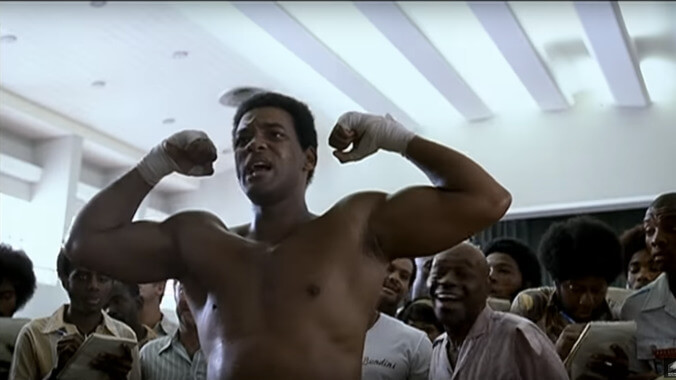
A towering symbol not just for the world of boxing, but for the world at large, Muhammad Ali isn’t anyone’s idea of an everyday boxer, but director Michael Mann’s skills are put to good use as he attempts to get behind the symbol in the new biopic Ali. Dramatizing the eventful decade between two upsets that won Ali heavyweight titles—his first encounter with Sonny Liston in 1964 and the Rumble In The Jungle with George Foreman in 1974—the film employs an episodic structure that focuses on key phases of his development, showing him as a brash young fighter, a spokesman for Black Power, a legal martyr for his refusal to be drafted for Vietnam, and an international icon. Will Smith plays Ali, and while the choice might seem odd, it proves inspired. Mann’s Ali, like its subject in his prime, seems incapable of making a false move. [Keith Phipps]

In a potentially star-making performance, John Boyega plays a charismatic gang leader whose attempts to mug a pretty nurse played by Venus’ Jodie Whittaker are rudely interrupted by the unexpected appearance of a fearsome alien monster. Whittaker, Boyega, and Boyega’s gang must subsequently put aside their gender, racial, and class differences for the sake of a common cause: fighting off a mysterious alien plague. [Nick] Frost is funny as a low-level drug dealer and National Geographic buff, as is Luke Treadaway as a student who stops by Frost’s weed spot to pick up some marijuana, and gets more than he bargained for.
A subtle (until it defiantly isn’t) British mood piece, Censor makes horror films, and the emotions they evoke, feel dangerous again—maybe as dangerous as they felt during that era of moral panic. The film, directed and co-written by Prano Bailey-Bond, is set in 1985, at the height of . It follows Enid Baines (Naimh Algar), one of the most motivated and meticulous censors at the BBFC. Enid has a visceral antagonism towards splatter that’s linked to a childhood tragedy the film thankfully discloses up front. The mysterious loss of her sister has left her sensitive to the why of the content she snips and bans, and every step she takes through life winds the spring tighter. Algar, best known perhaps for her regular role on , is staggeringly good here, whether wielding a notepad or an axe. She has the best horror movie hair since Greta Gerwig in : disciplined, but with meticulous unruly strands that imply repression and a shift in power dynamics. [Jason Shawhan]
[Martin] Short is one of our last great variety performers, an actor of range who can carry a tune and whose wild physicality both translates to choreography and plays all the way to the cheap seats. Before he was a kid in Clifford, he played characters like Ed Grimley, Jackie Rogers Jr., and Ned Nederlander with the busting-out-all-over energy of a child—something that kills in a sketch, but can be difficult to sustain for an entire feature. Clifford puts this to the test: Every new set piece, every absurd escalation in the battle of wits between Clifford (Short) and his architect uncle Martin (Charles Grodin), risks burning the audience out. Contemporary reviews suggests it did just that, leaving a Rotten Tomatoes fossil record littered with criticisms like “wearying,” “obnoxious,” and “gimmicky.” Yet if you’re tuned into Short’s peculiar wavelength, his indefatigability keeps Clifford aloft. Just when you think he and the movie might be losing steam, director Paul Flaherty (another SCTV alum) sends them galloping across a train platform, belting out a Judy Garland impression. [Erik Adams]
In lieu of the elaborate, expensive set pieces that would dominate later entries, Dr. No shows Bond engaged in actual spycraft. Before leaving his hotel room, he sprinkles powder on the latches of his briefcase and attaches a hair to one of his closet doors, so that he’ll know whether someone searches his room in his absence. (Someone does.) When an enemy poses as his ride at the airport—apart from a quick London check-in, the entire film is set in Jamaica and surrounding islands—he discovers the truth by cleverly… phoning the people who allegedly sent the ride and confirming that they did no such thing. There’s more shoe leather involved than usual, to the point where the movie occasionally feels as if it’s mostly Bond striding confidently across various rooms in exquisitely tailored suits. Even Dr. No’s plan isn’t especially diabolical, compared to those of future villains like Blofeld and Goldfinger; had Bond failed to stop him, the doctor would merely have set back a few years, in all likelihood. (World domination may be S.P.E.C.T.R.E.’s ultimate goal, but the present-tense stakes here are quite low.) It’s all pleasingly modest, combining the freshness of something new with the relaxed assurance of something well-established. When the Bond franchise starts to seem oppressive, Dr. No is the ideal palate-cleanser. [Mike D’Angelo]
From Russia With Love is a different sort of James Bond film, a tougher movie more deeply connected to Cold War politics than Dr. No. It didn’t so much advance the formula as offer an alternate take on what Bond could be, while still retaining many of the elements introduced in the first film. Set largely in Turkey and aboard the Orient Express, it’s a tight, self-contained thriller with some of the most intense fight scenes of any Bond film. (Plus, it has Lotte Lenya and Robert Shaw as bad guys.) Alfred Hitchcock helped provide a model for the Bond movies with North By Northwest, and this entry’s taut suspense comes closest to matching the master, while throwing in some bare-knuckled action and Cold War fears distinctly its own. (From Russia With Love also features the first appearance of Blofeld, the head of SPECTRE who would serve as Bond’s antagonist in several films, though he’s seen only in shadow here.)
Released in 1995, GoldenEye bore a heavy burden. It was first Bond film since 1989’s License To Kill, following the longest gap between series entries since its inception, as well as the first to not use elements from one of Fleming’s novels or stories. It also introduced an all-new Bond in the form of Pierce Brosnan (previously tapped to replace [Roger] Moore in the mid-’80s, but unable to sign on due to commitments to the TV series Remington Steele), as well as a new, female M (Judi Dench). Even more significantly, GoldenEye was the first Bond to be produced and released after the Cold War, a conflict that served as the backdrop for the series for 30-plus years.GoldenEye’s fairly clever solution to the problem of the Cold War’s thawing was to reignite it, with a story of a rogue MI6 agent (Sean Bean) who fakes his own death, gains control of the titular satellite weapon from a facility in St. Petersburg, and plans an attack on London. So not only does GoldenEye amp up waning East/West tension, it explicitly brings England—previously an intermediary bagman between the U.S. and U.S.S.R.—into the center of the newly kindled conflict. GoldenEye didn’t so much suggest a new direction for the series (apart from product placement and licensing arrangements) as revisit old pleasures, setting its new, smirking, decidedly Moore-ish 007 against ex-communist criminal syndicates.
Though the film was a hit, 1964 [From Russia With Love] follow-up Goldfinger plays as if its makers were worried Bond had gone too far in the wrong direction. It’s a big, globetrotting, occasionally cartoonish take on Bond that set the template for most of the films that followed. All the excesses of lesser Bond films (and their imitators) can be found here, except here they work, from the over-the-top villains to the narratively convenient spy gadgets. It skirts ridiculousness, but it’s also as good as Bond gets.
Throughout the first two decades of his career, [Paul] Newman alternated between smooth-talking pretty-boy roles and parts where he played troubled rogues, likable but dangerous. Newman received his third Best Actor Oscar nomination for Hud, in which he plays a rancher’s son who spends his days sexually harassing the family housekeeper while waiting for his dad to die so that he can claim his inheritance. And yet, even though the character is a total prick, Newman is strangely sympathetic, because he makes a life of drinking, roping, and not giving a damn look wholly defensible.
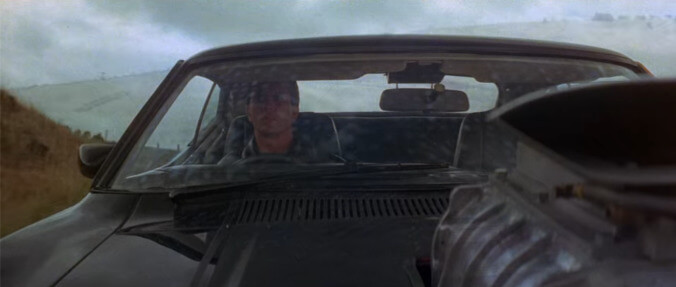
Like a Kurosawa samurai movie with Ford Falcons taking the place of horses, George Miller’s 1979 directorial debut Mad Max uses the grim possible future of “a few years from now” as the setting for a gritty action film whose visceral thrills arrive fused to a deepening bleakness. Not quite post-apocalyptic in the style of its sequels (The Road Warrior, Mad Max Beyond Thunderdome), Mad Max imagines a time in which civilization hasn’t so much collapsed as wound itself down. Cops and criminals vie for control of the roads, and from the film’s first breathless chase scene, between a hapless highway patrol and an AC/DC-quoting “terminal psychotic,” it looks like the criminals have the edge. Only Mel Gibson, given the best entrance since Clint Eastwood in A Fistful Of Dollars, has the ability to stand in the way, and from the start Miller links that ability to an appetite for self-destruction. [Keith Phipps]
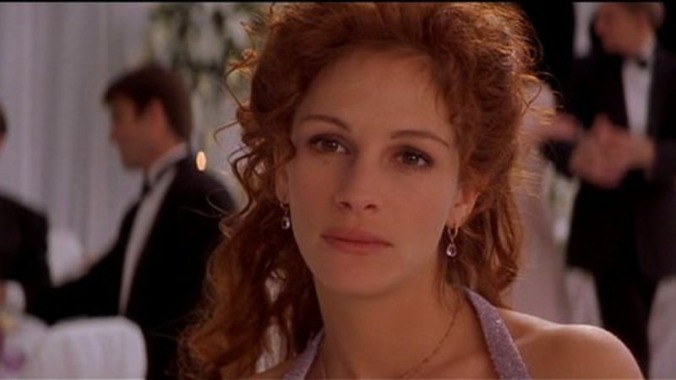
Rom-coms have happy endings. That fact is such a given that it’s often preemptively held against the genre. Why see a movie when you already know exactly how it’s going to end? It’s ironic, then, that one of the most beloved rom-coms of all time challenges the very nature of what we want from a happy ending. The all-around delightful My Best Friend’s Wedding—more so than maybe any other romantic comedy—benefits from not knowing exactly where things are going. The 1997 film stars Julia Roberts as Julianne Potter, a commitment-phobic restaurant critic who’s sent into a tailspin when she learns her longtime best friend—and one-time college hookup, whom she made a pact to wed if neither were married by 28—Michael O’Neal (Dermot Mulroney) is about to marry the bubbly, 20-year-old White Sox heiress Kimmy Wallace (Cameron Diaz). When Julianne confesses her love and impulsively kisses Michael, it doesn’t make him realize he’s in love with her. It only helps him confirm he’s actually in love with Kimmy. And even though she’s heartbroken, Julianne sets about righting her wrongs, ensuring the wedding goes off without a hitch. There are plenty of meta rom-coms and rom-com parodies, but My Best Friend’s Wedding is something unique. It’s a deconstruction of the romantic comedy genre that’s also a fully functioning, agreeably mainstream version of one. [Caroline Siede]
While ostensibly a road comedy, with Martin’s uptight executive going home for Thanksgiving with the annoyingly gregarious John Candy as a traveling partner, the 1987 film packs so much pathos between the pillows—er, laughs—that it plays like a drama, and a fairly dark one at that. Low-key films like this one rarely get the acknowledgment they deserve, but Planes is damn-near perfect. [Ryan Vlastelica]
Though nominally based on the long-running horror game franchise, mostly exists as a way for series writer and producer Paul W.S. Anderson to work out some of his favorite themes and reference points (namely, Through The Looking-Glass) while telling pulpy action stories chock full of video game-inspired cool. All of this converges in the fifth—and best—of the movies, which finds series protagonist Alice (Milla Jovovich) journeying to a top secret testing facility of simulated environments (Tokyo, Moscow, an American suburb) populated by NPC-like clones. The result is a zippy, sometimes bizarre movie that is overtly about video games. Anderson (who also directed) had by this point abandoned any pretense of horror in favor of outrageous 3-D compositions that play with the viewer’s perceptions and preconceptions: a sky rebooting like a computer screen; a new Alice being introduced and then abruptly killed off; cityscapes revealed to be interiors. [Ignatiy Vishnevetsky]
With his adaptation of Richard Yates’ 1962 novel, Sam Mendes reunited the most dreamy onscreen couple of the ’90s for the first time since they went down with the ship over a decade earlier. And he put their nitroglycerine chemistry to good use: Kate Winslet and Leonardo DiCaprio both turn their star personas inside out as Frank and April Wheeler, a couple with enmities to match the intensity of their passions. When they first meet, she’s an aspiring actress and he isn’t much of anything; soon, she gets knocked up and he lands a salesman job in an office that might as well be downstairs from Sterling Cooper. Like Don Draper, he takes to boozing and the occasional philander to cover his existential lack of fulfillment, and like Betty, she chafes under the constrictive role of a housewife. To throw off the oppressive yoke of commuter-country Connecticut, they make plans to move to Paris and start anew, but events and their own insecurities conspire against them. Once Frank learns that his spouse will be the primary breadwinner in a country where she speaks the language and he doesn’t, his masculinity is threatened and the social mores of the ’50s collide with the free-spirited ’60s. [Charles Bramesco]

Wes Anderson’s second movie properly introduces the self-consciously theatrical style that hundreds of indie films and twee TV series . But Rushmore itself only looks artificial, with its thrift-store decor, British Invasion score, and comic-book compositions. Beneath the surface, this wistful, arch high-school romance—about an over-scheduled prep school student, a lonely middle-aged millionaire, and the heartbroken teacher they both adore—is filled with Anderson’s and cowriter Owen Wilson’s deeply personal observations. Despite the dry dialogue and retro affectations, actors Jason Schwartzman, Bill Murray, and Olivia Williams are all playing multi-dimensional characters, who ache as big as they dream. Even in a post-Wes Anderson era, it’s rare to see a quirky American comedy with such a strong point of view, expressing the filmmakers’ observations about the similarities between adolescent frustration and adult melancholy. [Noel Murray]
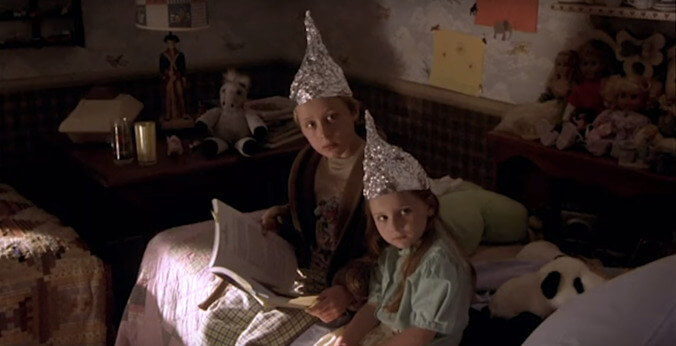
With the action confined mainly to a remote farmhouse in rural Pennsylvania, M. Night Shyamalan’s conceptually brilliant Signs plays like a living-room War Of The Worlds, gaining most of its unsettling force from the suggested and the unknown. Signs confirmed Shyamalan as an exceptionally supple and intuitive visual storyteller, evoking fear and dread through insinuating camera movements, subtle sound and lighting effects, and canny use of offscreen space. For a big-budget Hollywood feature, the film places an unusually high amount of stock in the audience’s imagination; not since The Others or The Blair Witch Project had so many shocks been indirect or kept teasingly out of view. In every sense the anti-Independence Day, Signs is a lesson in the art of withholding information, shining a flashlight’s beam into a sea of darkness and hiding its bogeymen in the shadows. [Scott Tobias]
[Tom] Hanks plays Sam Baldwin, a recently widowed Chicago architect who moves across the country to Seattle with his 8-year-old son, Jonah (Ross Malinger), in the hopes of giving them both a fresh start. Worried that his dad is lonely, Jonah places a Christmas Eve phone-call to a Delilah-esque radio program to ask for advice. Initially wary, Sam soon finds himself recounting his story of love and loss to a national audience of rapt late-night listeners. One of those listeners is Annie Reed (Meg Ryan), a Baltimore Sun reporter who’s convinced herself it’s not a problem that her connection with her fiancé, Walter (Bill Pullman), is more practical than romantic. Yet try as she might, Annie can’t stop thinking about the melancholy but poetic widower the radio host dubs “Sleepless in Seattle.” So, under the loose guise of writing a story about the thousands of women who reached out to Sam for a date after hearing his call, Annie begins to investigate his life and try to make a connection of her own. [Caroline Siede]
First of all: Carly Simon’s “Nobody Does It Better” is the best James Bond theme, and to heck with anyone who says otherwise. Second of all, the film it’s attached to, 1977’s The Spy Who Loved Me, may be just as good, one of the definitive examples of what a Bond movie can do when it’s firing on all cylinders. Roger Moore took over for Connery with Live And Let Die in 1973 and his third Bond film, The Spy Who Loved Me, incorporated some of the more gimmicky excesses of Live And Let Die and The Man With The Golden Gun while leaving behind the eager genre-aping (unless the genre being aped here was just “Bond movies”). Like From Russia With Love, Spy perfectly harmonizes its Cold War backdrop with pulpy escapism, pitting 007 against Barbara Bach’s seductive KGB agent and Curd Jürgens’ Stromberg, a supervillain bent on fashioning a new underwater civilization. It also introduces Richard Kiel as fan favorite mini-boss Jaws, a giant with metal teeth whose twin deformities render him legitimately menacing.As in the best Bond pictures, the trekking between countries (Austria to Egypt to Italy to Stromberg’s subaquatic haven) provides the film with a true sense of variety, while Marvin Hamlisch’s funked-up score (including a reworked theme) brings Bond out of the swinging, surf-rock ’60s and square into the disco daze of 1977. Moore was never as gifted a physical actor as Connery (or Craig, or Lazenby), but Spy sees him at his own, distinctively Moore-ish peak form: making daring, rear-projected alpine escapes, playing it cucumber-cool with his sundry female consorts, and developing some credible chemistry with Bach’s conniving rival agent. The Spy Who Loved Me is Moore-vintage Bond at its best.
By the time Theatre Of Blood was released in 1973, [Vincent] Price’s career had come full circle: He got his start on the London stage while studying abroad in the 1930s, and in the late ’60s he returned to England for a series of starring roles in British horror movies including The Abominable Dr. Phibes, Scream And Scream Again, Madhouse, and Witchfinder General. By that point, Price had channeled his natural brio into the screen persona he’s known for today, as a wickedly debonair aristocrat with a mellifluous voice and, more often than not, sinister intentions. And he’s rolling his “r”s and punching his “p”s with more relish than a ballpark hot dog in this film, best described as a Herschell Gordon Lewis splatterfest by way of a saucy British sex comedy. [Katie Rife]
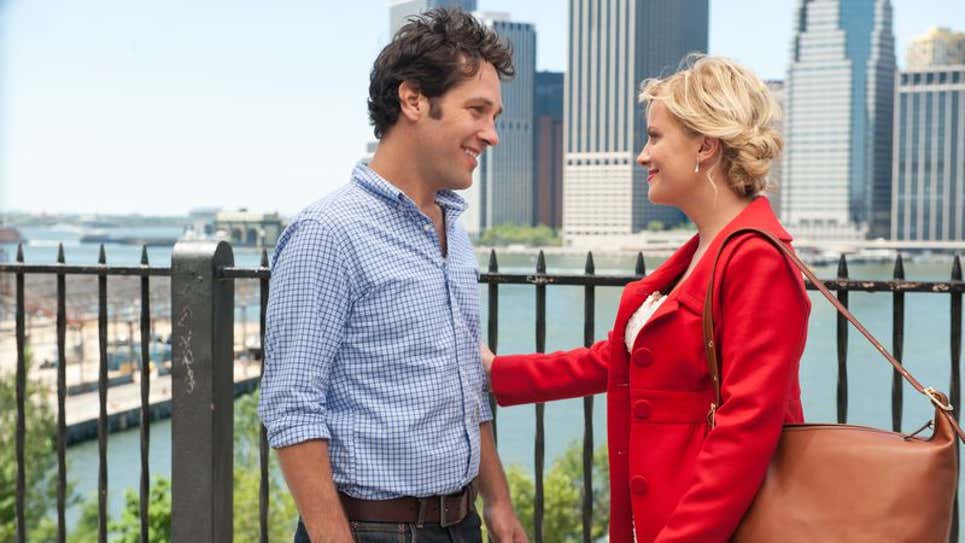
Parody, in its purest form, is an act of both mockery and appreciation. True masters of the practice possess a bone-deep understanding of their targets; they skewer because they love—or at least, because they’ve done their homework. Judging from the sublimely silly They Came Together, director and co-writer David Wain is a closet connoisseur of the modern romantic comedy. About midway through the film, he offers a spot-on approximation of one of the genre’s many tropes: As Norah Jones coos sweet nothings on the soundtrack, the happy couple—played by Paul Rudd and Amy Poehler—canoodle through a Manhattan montage, making pasta for two, swimming through a pile of autumn leaves, and horsing around at a fruit stand. Everything about the scene, from its compositions to its editing to its wordless performances, is uncannily familiar. There are actual jokes, too, including an agreeably absurdist punchline, but they’re almost unnecessary. Seeing clichés mimicked this skillfully is plenty hilarious. [A.A. Dowd]
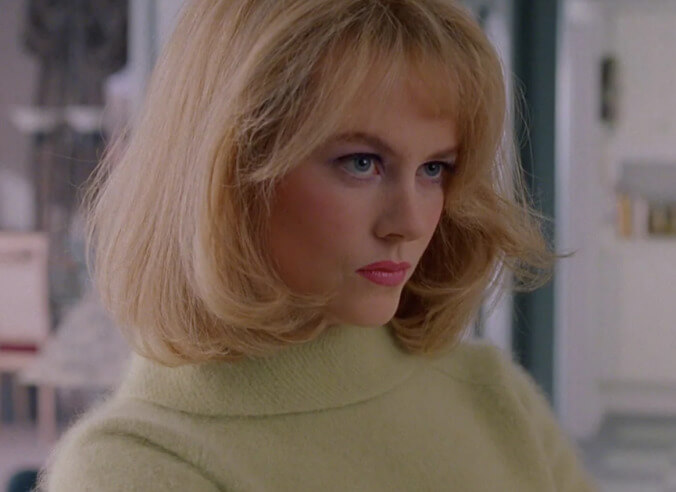
The amoral morass of crime coverage is a black lagoon from which this contemptible creature emerges. Suzanne’s personality has absorbed everything garish, inauthentic, and nasty about television in an effort to conquer it. She knows full well that sex sells, jumping into bed with a network executive while on her honeymoon after she gets the faintest whiff of career advancement. In a pinch, she’s all too willing to traffic in ugly profiling, referring to Jimmy and his friends (Alison Folland and a pre-fame Casey Affleck) as “a bunch of 16-year-old losers who grew up in trailers, whose parents sit around drinking and screwing their cousins.” She’s entirely free of redemptive qualities—precisely the sort of challenge Kidman was eager to sink her incisors into. Today, Suzanne looks like the most resolutely unsympathetic figure in a C.V. well-stocked with complicated and prickly characters. Currents of villainy flow through Kidman’s career, but she’s never plumbed a pit as bottomless. [Charles Bramesco]
GET A.V.CLUB RIGHT IN YOUR INBOX
Pop culture obsessives writing for the pop culture obsessed.